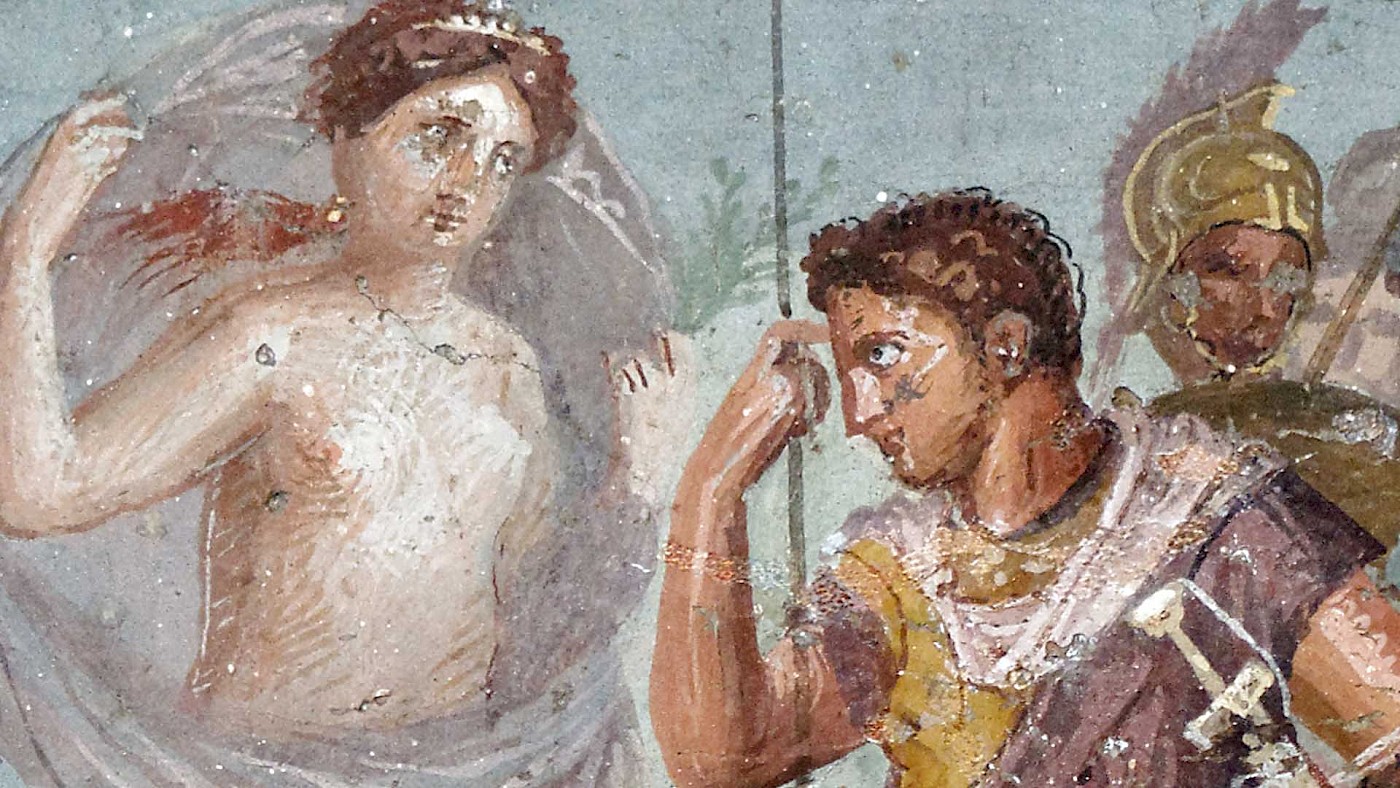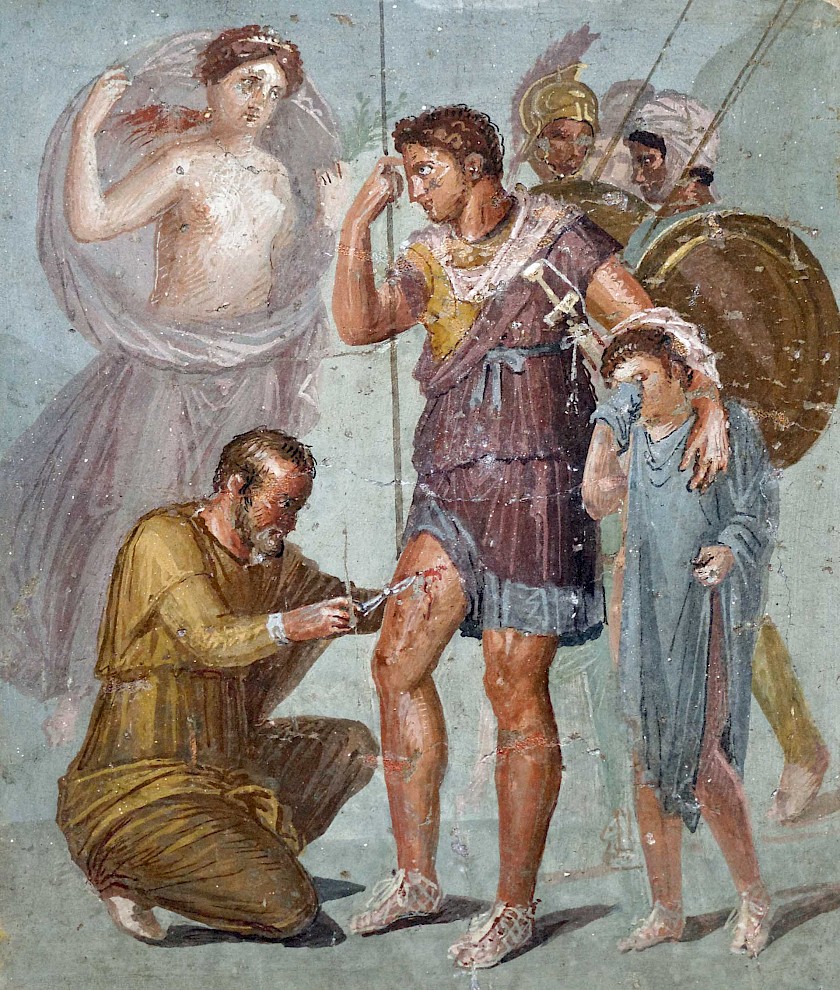The National Archaeological Museum of Naples has an excellent collection of Greek and Roman antiquities, including an exquisite collection of frescoes from Pompeii and Herculaneum. I’ve written about some of these objects before and, since I’m currently in Naples, it’s a good time to write about one of my favourite frescoes in the museum.
The painting depicts the hero the Trojan hero Aeneas, the progenitor of the Roman people, with a wound to the leg:
The scene is known from Virgil’s Aeneid. In the twelfth and final book of this epic poem, the hero is struck by an arrow that apparently came out of nowhere (ll. 12.389–395; translation Patric Dickinson):
See, where an arrow came whistling through the air
Straight for the hero – none knew who was the archer,
Or on what airs let loose, nor who should win
Such renown for the Rutulians – was it a god?
Was it sheer chance? The author of the glory
Remained unknown or hidden – none ever boasted
Of wounding Aeneas.
Aeneas leaves the battlefield, which inspires his main opponent, Turnus, to take to the field and wreak havoc. Aeneas arrives at camp, where he is met by a number of his friends and allies, as well as his son, Ascanius (ll. 12.460–463):
But now while Turnus ramped death-dealing about the plain,
Mnestheus, Ascanius and loyal Achates
Supported Aeneas bleeding and lurching back
To camp, his limping weight leant on a long spear.
Aeneas is tugging at the arrow shaft, but to no avail. He orders his friends to enlarge the wound with a sword. Soon, Iapyx arrives, who was, as Virgil puts it, “adored by Apollo” (Aeneid 12.469). But no matter what Iapyx tried, he couldn’t extricate the arrowhead. Then, Aeneas’ mother, the goddess Venus (Greek: Aphrodite) saw her son’s plight and picked from Mount Ida on Crete a plant called “Dictamnus”. Cloaked in mist (ll. 12.499–508):
She carried this plant down and infused with it
The waters they had poured into an urn,
And added tonic ambrosia, the scented panacea,
And nobody knew it. Old Iapyx knew nothing.
As he bathed the wound with the water ignorant
Of its powers – but suddenly all the pain Aeneas
Had felt vanished, and the wound’s bleeding stanched.
Then of itself, without anyone freeing it,
The arrowhead fell out into his hand
And Aeneas was restored to his full strength.
As you can see, all of the elements of this passage from the Aeneid are present and accounted for in the fresco: Aeneas is shown leaning on a spear. Iapyx is depicted trying to remove the arrowhead. Aeneas’ son Ascanius (also known as Iulus) is drying his tears. Some of the hero’s friends are shown behind him. And approaching from left is the goddess Venus, apparently unnoticed by anyone else in the scene.
This fresco was found in the House of Sirico in Pompeii, a large dwelling in the central part of Insula 1 of Region VII. The house actually consists of two buildings that were joined in the first century BC. Thanks to the discovery of a bronze seal, we know who the last owner of the house was, one P. Vedius Siricus. He was probably a merchant, as a tile on the floor near the entrance had the inscription SALVE LUCRU (“Welcome profits!”).
Originally, the fresco decorated one of the walls of the triclinium or dining room. As it depicts a scene clearly derived from the Aeneid, it would have shown to Siricus’ guests that their host was a cultured man, familiar with Latin literature, and who also respected Roman traditions.

